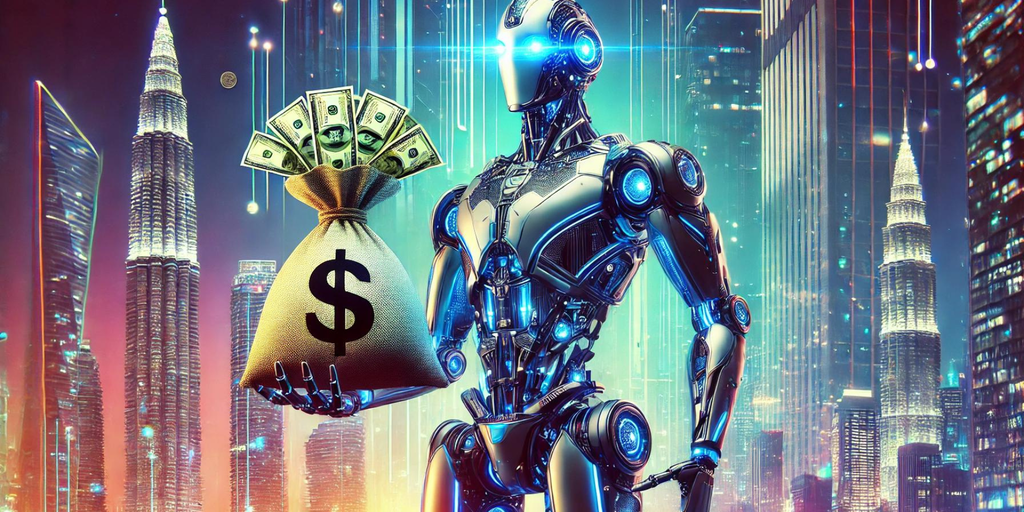Solana launchpad Pump.fun has become the home for quirky new artificial intelligence (AI) projects to drop a token in order to gain a little extra cash and attention. But while this has led many speculators and influencers to believe that crypto will be key to AI’s next big evolution, experts in the field disagree.
Truth Terminal was the first AI project to catch the eye of crypto degens when the AI agent—which was trained mostly on memes—created its own religion based on an internet-famous graphic photo of a man’s anus.
From this spawned Goatseus Maximus (GOAT), with tons of tokens being sent to a wallet owned by Truth Terminal, and then popular Solana meme coin Fartcoin (FARTCOIN) was created by an unknown human after the agent spoke about the idea.
Andy Ayrey, the creator of Truth Terminal, told Decrypt that this crypto-fueled attention had its positives. He said that it created a “media spectacle” around the project, attracted more eyes, and gave Ayrey a platform to speak about how memetics should shape AI.
pump fun has incubated more AI unicorns than your favorite web2 VC
— pump.fun (@pumpdotfun) January 6, 2025
“One way to think about Pump.fun is that it’s the biggest attention marketplace on the internet. It allows anyone to harness the power of tokenization to build a community around an idea,” Pump.fun co-founder Alon Cohen told Decrypt. “The reflexivity of launching a meme coin makes it so much easier for [founders] to get eyes on their ideas than turning to traditional social media.”
On top of this, in January, the Truth Terminal team completed a large over-the-counter sale of FARTCOIN, worth approximately $22 million at the time, which helped them hire people to continue the project’s development. Even so, Ayrey was largely criticized for the sale, due to the short-term impact on the token’s price and the apparent human control of Truth Terminal.
“I don’t think AI projects necessarily need to be tokenized,” Ayrey explained. “It is, however, a way that independent AI researchers or labs can capitalize their early operations without having to raise venture capital or apply for grants.”
By contrast, Neiry Lab, a research lab based in Russia that has given a rat an AI brain, mostly views its meme coin as a marketing tool. Neiry Lab told Decrypt that it didn’t need the money, due to its venture capital funding, so has just used the meme coin as a way to attract more eyes—pushing its X account to over 33,000 followers.
Cases like this have led crypto builders such as Cohen to speculate that the token trenches are America’s “only hope” to remain competitive in the field of AI. Plus, the official Pump.fun X account, perhaps half jokingly, claimed that the site had incubated more AI unicorns than most Web2 venture capital funds, after numerous AI coins passed a $1 billion market cap.
“Given the fact that Pump.fun continues to be the largest meme coin hub with the most users and liquidity, it’s safe to say that innovation will be seen there first,” Cohen told Decrypt.
the only way for America to remain competitive in AI and save humanity is to find its own DeepSeek
give that big tech is washed and yc only funds wrappers, it seems that the pump fun trenches is our only hope
— alon (@a1lon9) January 27, 2025
But a University of Oxford researcher within the field of artificial intelligence and blockchain believes that crypto isn’t the place to be looking for AI innovation.
“Much of the new AI coins, AI agentic coins, and AI blockchains are nothing more than just meme coins with no real value,” University of Oxford researcher Dr. Petar Radanliev told Decrypt. “These are speculative bubbles that will burst in the next bear market, and 99% will end up in the crypto graveyard—with all other speculative coins and tokens from previous bull runs.”
In many ways, this is already true, with countless tokens launching every day promising to be the next innovation in AI just to quickly reveal itself to be the opposite.
“Pump.fun has enabled criminals to seamlessly, anonymously launch tokens around tech that is either blatantly stolen or doesn’t exist,” trader Tyler Stockfield, known as Anon online, told Decrypt. “There is a very concerning pattern of launches that are being promoted and supported by [influencers] and cabals that are premeditated farms that go to tens of millions market caps and back under $1 million in less than 24 hours.”
Equally, some tokens speculate off projects that they aren’t officially tied to, even though the technology is genuinely impressive. These unrelated coins, however, are profit-seeking grifts at best and outright pump-and-dump scams at worst.
When DeepSeek took the AI world by storm, a slew of unofficial tokens launched via Pump.fun—which lets anyone create a token in seconds for free. One token, DeepSeek (SEEK), skyrocketed to a $54 million market cap while another, DeepSeek (DEEPSEEK), hit $14 million. Both now sit below $400,000, as investors who bought at the top now have near-worthless bags.
“We only care about the ‘revolutionary tech’ while the number is going straight up,” Stockfield explained. “The tech might be real! But the prevailing trend is that not enough people care.”
TruthChain, for example, was seen as an exciting project that used LLMs to fact-check each other; it was founded by Rex St. John, a former Nvidia and Intel developer. A meme coin dedicated to the project—and endorsed by John—soared to a market cap of $17 million in its first day as hype built, but has since collapsed to a market cap below $500,000. Now John has been dragged into the world of meme coin degeneracy, while he continues to work on his AI product.
“Every trick in the book gets used to manipulate founders of AI projects,” Ayrey explained. “This includes hacking of accounts, fudding for entry, threatening suicide, wishing your family harm, and so on.”
“The constant search for the next ‘pump’ means people rifle through every part of your life,” he added, “to try and find pets, former projects, etc. in a self-replicating paparazzi.”
Ooli, the creator of the AI With Daddy Issues project, explained that the SHEGEN token brought “tremendous energy, but ultimately, it was difficult to sustain” due to her lack of capital to cover development costs. This issue is particularly pronounced because developers can’t really sell their tokens without crypto degens going after them with pitchforks, Ayrey said.
While AI projects with meme coins see an initial boost in attention, in many cases it appears that the downsides outweigh the sometimes brief positives. Developers face pressure from speculators wanting the price to go up, personal attacks by degens looking for their next play, and an angry mob coming for them if they ever sell.
For these reasons, Ayrey believes the incentives aren’t aligned for most truly innovative AI projects to launch on Pump.fun—and, the Oxford researcher agrees.
“The innovation is happening in the shadows,” Dr. Radanliev told Decrypt.
DeepSeek was one of the biggest moments in the AI industry of late, and it came out of the blue for most people—and certainly didn’t come as the result of a meme coin. In fact, it has nothing to do with crypto at all. And that may be the case for the future AI projects that really make an impact, at least for now.
“In this bull run, we are getting the investors interested—but it will take time to develop, and development is always happening in the bear market,” Dr. Radanliev added. “You should be looking at new solutions that emerge at the bringing of the next crypto cycle.”
Edited by Andrew Hayward
Generally Intelligent Newsletter
A weekly AI journey narrated by Gen, a generative AI model.




